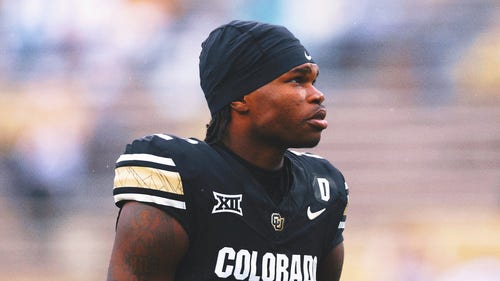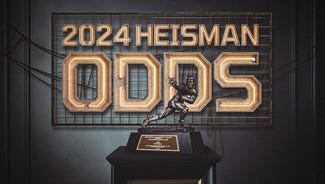
The intricacies of what goes into a college football play

TUCSON, Ariz. (AP) Rich Rodriguez hears it all the time. He could be at the grocery store, gas station, a restaurant and inevitably someone will come up to him with a suggestion for a play or a new scheme.
The Arizona coach always listens graciously, tells them he'll take it under consideration, goes on his way.
''It's nice that they're interested, but I ain't going to listen to it,'' he said.
Perhaps more than any other sport, football is the one fans seem to think they could coach if given the chance. There's even a name for it: Monday Morning Quarterback.
In reality, it may be the most difficult, filled with so many variables it would make fans' heads spin if they saw everything that really goes into it.
And the more pressure-packed the game, like Monday night's national championship between Alabama and Clemson, the harder it gets.
''The game is far more intricate than most fans realize,'' Rodriguez said. ''When you have 22 people on the field and all have a particular assignment and to run a scheme, unless you're in the day-to-day operations of it, you really have no idea what goes into every particular play.''
To demonstrate the difficulty of coaching football, Rodriguez agreed to break down a single play from the 2014 season: Austin Hill's 92-yard touchdown catch on the first play of the second half in Arizona's season-opening 58-13 win over UNLV.
---
Quarterback Anu Solomon calls out the formation in the huddle and tags the play as one of Arizona's various run/pass options so the linemen don't run too far down the field in case it's a pass. The Wildcats line up two receivers to each side and running back Nick Wilson to the right of Solomon.
UNLV sets up with four down linemen, a linebacker in the middle and another player on the right just outside the box, the area between the offensive tackles that runs about seven yards deep. Two defensive backs are close to the line of scrimmage on each side and three players are about eight yards deep.
On the snap, Arizona's five linemen zone block to the left, as if it were a running play. Each picks up a player to block, but they leave the left defensive end to roam free.
This is by design. The defensive end is the first read for the quarterback in the zone read offense Rodriguez created 20 years ago at Glenville State and still uses today.
''In the typical zone, the guy who will be unblocked is the defensive end, so in a sense you gain a guy,'' Rodriguez said ''By having the quarterback read him, he in a sense blocks him. Instead of playing 11 on 10, you're playing 11 on 11. They've got to defend everybody.''
Solomon has to make a split-second decision after the snap on the defensive end. If he charges up the field like a pass rusher, Solomon will hand off to Wilson. If the end squeezes in, as the UNLV player did on this particular play, Solomon will fake the handoff and take off to the right.
Solomon's next read also comes immediately. After getting past the defensive end, he has to determine if the interior defensive back is coming up to stop the run or will defend the pass.
The defensive back charges, so Solomon knows his best option is to throw.
''He could gain three yards there, but I'd rather score a touchdown,'' Rodriguez said.
In the early days of Rodriguez's zone read offense, he would send the slot receiver flared out to the right on a bubble screen whenever the inside defensive back charged in to stop the run. The slot receiver would catch the ball while running parallel to the line of scrimmage as the outside receiver blocks the other defensive back.
Over the years, defenses started sending a safety charging up the field to blow up the bubble screen, so Rodriguez and other zone-read coaches had to adapt.
One adjustment was to not throw the ball to the inside receiver and have him run around the outside receiver and up the rail (sideline).
In this case, Arizona had a play call for the inside receiver to flare out in a bubble screen, but instead of blocking for DaVonte Neal, Hill faked the block and ran a slant. Throwing off-balance - something Arizona's quarterbacks practice repeatedly - Solomon hits Hill in stride, just in front of the safety. Hill breaks a tackle and takes off, winning a foot race with the rest of UNLV's defense for the long touchdown.
The play ran to perfection but it's not always that easy.
Maybe next time the defense changes formation, breaks its tendencies, comes up with a new wrinkle, like running stunts so new players fill the various gaps.
To combat this, Rodriguez and his coaches have a variety of play combinations and are constantly adapting.
Using the same formation, Arizona could have the outside receiver run a curl or a stop-and-go instead of a slant. Maybe the Wildcats flip the play, have the receivers on the left run a bubble screen, up the rail or a slant.
Arizona also could run the same exact play to the right, but throw back to the left to receivers who are running any number of route combinations instead of serving as decoys.
Sometimes the read for the quarterback isn't the defensive end, but a linebacker or defensive back.
''That's what the chess match is,'' Rodriguez said.
Alabama's Nick Saban and Clemson's Dabo Swinney will take their turn on the board (field) Monday night, a national championship on the line.



